Five years of giving rural students second chances
At the age of 64, Billy G. Hudson, a renowned expert in the molecular basis of kidney diseases, one day returned to his rural Arkansas hometown after an absence of 50 years and got on a yellow school bus. Hudson wanted to help the children in his childhood community but had no idea how to go about it. He decided to ride the school bus. “I don’t know why I did it,” he says.
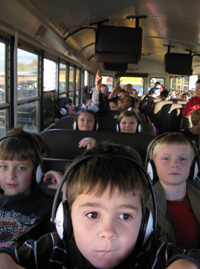 |
| Children riding a school bus in rural Arkansas take in science lessons played on the TV screens installed in the bus. |
It was a chilly October morning in 2005, still dark at 6 a.m., when Hudson climbed up the bus stairs to start the one-and-half-hour trip to the local school on the street he lived on as a child. The bus jolted over gravel roads and went past densely wooded areas with only the occasional glimpse of a house, traveling over land Hudson knew intimately as a child.
Hudson had arranged to ride with the children, who ranged from kindergartners to high-school seniors; spend the six-hour day at school; and accompany the children on the ride back home. In the morning, the children were too wary and shy to speak to Hudson. But in the afternoon, some of them began to pipe up, with one preteen boy telling Hudson he loved math.
The nine-hour school day (including the three hours spent idle on the bus) gave Hudson the inspiration he was searching for to help rural children, who face unique challenges in getting an education. “Many of the children live in poverty and may come from dysfunctional families. They have limited exposure to professional people,” says Hudson, a professor at the Vanderbilt University Medical Center who recently celebrated his 70th birthday. He adds that elementary and middle school teachers often don’t have the technical expertise to teach science, mathematics, technology and engineering adequately. On this point, he knew he could help.
With his wife, Julie K. Hudson, a physician and assistant vice chancellor for health affairs at the Vanderbilt University Medical Center, Billy Hudson launched the Aspirnaut Initiative in April 2006. The initiative began with an ordinary yellow school bus outfitted with laptops, iPods, and a mobile Internet router (a novelty back then) that directed the children to online STEM educational programs so they could use constructively the three hours spent each weekday on the bumpy bus ride. Now, five years later, the initiative has grown larger and involves 500 students every year.
When he started the initiative with his wife, Billy Hudson was no stranger to hard work. His scientific successes include the discoveries of two new collagen chains and a novel chemical bond that fastens them together. He received the National Institutes of Health Merit Award in 2002 and the Homer W. Smith award, the highest honor from the American Society of Nephrology, for his contributions to understanding kidney diseases in 2003.
But none of these accomplishments hints at the grueling road he took to his current position. Hudson’s “life story is fascinating,” says friend and colleague Richard W. Hanson at the Case Western Reserve University School of Medicine. “You couldn’t do more than what he has done with his life.”
From a rural gravel road to Vanderbilt
Billy Hudson grew up on a 15-mile gravel road in rural Arkansas. “My address was Grapevine, Arkansas. The street was 40th and Plumb, meaning 40 miles from town and plumb-back in the sticks, as we’d say,” he says with a chuckle.
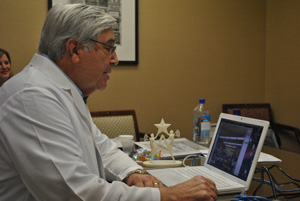 |
| Billy Hudson joins a videoconference science lab beamed to a rural Maine school. |
Hudson’s childhood chores in the 1940s and 1950s included tending to cotton and taking care of 20,000 chickens and other livestock. The physical labor was accompanied by regular and spurious beatings, which his father meted out with tree branches with the message that Hudson was never good enough.
Unable to stand his father’s abuse and threats of violence any more, Hudson decided at the age of 16 to drop out of high school to work on a cotton farm. His history teacher and basketball coach, Robert Theus, “knew I was going to destroy my life. He was the one who first showed me a light and how I might get out of my circumstances,” says Hudson. “There are champions who come into your life to help you. I was fortunate.”
Theus took Hudson to Henderson State Teachers College (now Henderson State University) in Arkadelphia, Ark., where Hudson was allowed to enroll without a high school diploma. There he met chemistry professor and mentor Haskell Jones, who encouraged Hudson to complete a college degree in chemistry. A cafeteria supervisor, Alice Sloan, made sure Hudson had jobs to earn room and board. After Hudson completed one year of college, his high school decided to award him an honorary diploma. Several other mentors guided Hudson into getting a Ph.D. in biochemistry at the University of Iowa under the supervision of Rex Montgomery and Robert Barker. During that time, he studied carbohydrate chemistry.
The Vietnam War was on when Hudson graduated with his Ph.D. in 1966. He joined the army and was assigned to improve filtration membranes for dialysis machines at the Army Research Institute of Environmental Medicine in Boston. It was work on the dialysis machines and a lecture by Robert Spiro of Harvard Medical School that got Hudson interested in diabetes and the havoc it wreaks on the kidneys. That interest has led to understanding the basement membranes of kidneys, which act as a filtration barrier. Diseases such as Goodpasture and Alport syndromes and renal failure arise when there are defects in the basement membrane. Hudson’s research led to the discovery of the α3 and α4 chains of collagen IV, which, along with the α5 chain, create the essential meshwork for kidney filtration. His work also has found its way into clinical applications. “Before there was such a thing as translational science, he was doing it,” notes Hanson.
A company called NephroGenex is currently developing a compound discovered in Hudson’s lab that protects against diabetic kidney disease. The U.S. Food and Drug Administration is getting close to approving a Phase III clinical trial to test the compound, Pyridorin, in more than 1,000 diabetic patients.
In 2009, Hudson and his colleagues discovered a novel sulfilimine bond, in which sulfur and nitrogen are double-bonded together, in type IV collagen. This bond exists in all animals but had not been found previously. Hudson says they have now established that an enzyme from the peroxidase family makes the unusual bond, and they think the enzyme and the sulfilimine bond emerged more than 500 million years ago as a primitive form of innate immunity.
Back to the roots to solve a problem
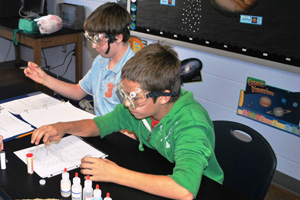 |
| Students participate in a science lab fun by the Aspirnaut Initiative. |
But even with decades of scientific success under his belt, Hudson hasn’t forgotten his beginnings and has returned to rural America in hopes of helping younger generations replicate his success. “He hasn’t turned his back on people who are in the same position as he was earlier in his life,” says Hanson.
The current crisis in U.S. science, technology, engineering and mathematics education, caused by inadequate numbers of students taking an interest in these fields, could be helped if the needs of rural students were addressed, says Hudson. Twenty percent of the K–12 student population in the United States lives in rural areas. “It’s an untapped pool of talent in rural America that can be brought into the STEM workforce,” he says. “The talent is there, but students need to be presented with opportunities.”
Aspirnaut Initiative’s first bus program rolled into something bigger within a year. Julie Hudson says it quickly became obvious that time on the school bus needed to be managed better, so the couple started an after-school class twice a week to work with the students. That class in turn grew into something else, which the Hudsons now consider to be the flagship of the initiative.
These days, researchers at Vanderbilt University hold weekly science labs via videoconference with children in rural schools. The Hudsons explain that they base the labs on those developed by the Vanderbilt Student Volunteers in Science program, which takes science kits to students attending Nashville-area schools. But with Internet-based videoconferencing capabilities, the Aspirnaut program now makes it possible to reach schools not physically near Vanderbilt. “We have a real-time interaction with the class, where we’re bringing the intellectual assets of a research university, in partnership with the school, to give students hands-on, inquiry-based, critical-thinking activities,” says Billy Hudson.
The science labs, built around real-world issues, now get beamed into classrooms in Arkansas, Tennessee and Maine. Hudson gives the example of the theme they built around his research area of diabetes. The children first learn about electricity, magnetism and the concepts of nuclear magnetic resonance spectrometry. Next, they learn about metabolism and how metabolic malfunctions cause diseases like diabetes. Then they hear about how researchers use tools like NMR spectrometry to develop therapies against a given disease. “Rather than say ‘Here’s a kit in chemistry. Good luck,’ we try to relate science and math concepts to their everyday lives through hands-on activities,” explains Hudson.
While many scientists immediately see the value of helping with K–12 STEM education, Hudson acknowledges that some say that they have pressures of their own and feel they can’t spare the time. Hudson says all that is required of a scientist is to devote an hour once in a while to show up for a videoconference with a lesson prepared for grade-school children. “We have a responsibility for educating our citizens in science,” urges Hudson. “You’re not going to turn all these teachers out there into STEM experts. You’re not going to turn the scientists into K–12 teachers. But as a partnership? It’s a winning strategy.”Path out of poverty
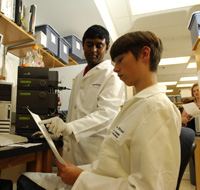 |
| High school student Jonathan Stroud is mentored by Mohamed Rafi, Billy Hudson’s research assistant, during a summer internship. Stroud’s program mentor was Roberto Vanacore, and his research project was on Goodpasture’s syndrome. |
In addition to the bus and the videoconferenced science lessons, the initiative has a third program that involves six-week summer internships for high school students doing fundamental research in various Vanderbilt laboratories. “They come from rural communities, earn a stipend, and are provided their room and board,” explains Hudson. “We challenge them to help advance our scientific objectives.”
The students are immersed in the daily pace of research and return to high school in the fall with new experiences that inspire them to work harder in school, says Hudson. The students help the teachers organize the videoconferenced science classes and earn an hourly wage while doing so.
Out of the 36 high school students who have gone through Aspirnaut internships, 26 have finished high school, and 25 of those are now in college. (The math-loving boy Hudson met on the school bus in 2005 participated in some of the Aspirnaut programs and now is in college.)
The Hudsons visualize the Aspirnaut Initiative as a pipeline. Students first get on the school bus and start learning about science, medicine, engineering and mathematics. In elementary and middle school, they get exposed to the videoconferenced labs. Then in high school, they get hands-on experience in research laboratories and find mentors to guide them to college.
The Hudsons’ biggest wish for the initiative is for it to serve as a model for other major research universities, according to Julie Hudson. “While Vanderbilt has an enormous bandwidth, we certainly couldn’t, nor do we wish to be, the end-provider for the entire nation. We have demonstrated that the model is replicable in other rural states.”
Because of the intense mentoring that goes on with the summer interns, the Hudsons get to know the teenagers intimately. “Almost every one of these students has an incredible life story,” she says. One student was born in prison and handed off to his grandmother “in a Christmas stocking” when he was three-weeks old, recounts Hudson. The boy’s grandmother became his legal guardian. Hudson says, “They lived on almost no money for many years because all they had was her pension. That was $9,000 a year.”
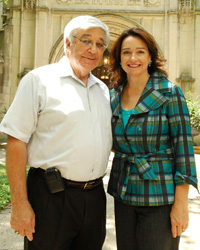 |
| Billy and Julie Hudson founded the Aspirnaut Initiative. |
From a young age, the boy was very motivated to change his circumstances. He excelled in school and read a lot. In high school, he taught himself the curricula of a number of Advanced Placement courses and sat for the exams. He passed 11 AP courses eligible for college credit with flying colors. He applied to the Aspirnaut summer intern program between his junior and senior years of high school and had “an outstanding summer of research,” says Hudson. He maintained ties with Aspirnaut during his senior year of high school by helping with the bus and videoconference programs in his community. “He served as a junior mentor to the students,” she says. “He’s now a sophomore at Vanderbilt and has an excellent academic record. He’s going to apply for early decision to medical school” and is hoping to earn an M.D./Ph.D.
Students like this young man are the ones Billy Hudson always looks out for to introduce to the Aspirnaut Initiative, mindful that he broke out of the circle of poverty and abuse at the age of 16. “We show them education is a way of breaking free of difficult situations,” he states. “That’s the path I know out of poverty and out of abuse. It’s what education can do, but it can’t happen unless an opportunity passes your way.”
Enjoy reading ASBMB Today?
Become a member to receive the print edition four times a year and the digital edition monthly.
Learn moreFeatured jobs
from the ASBMB career center
Get the latest from ASBMB Today
Enter your email address, and we’ll send you a weekly email with recent articles, interviews and more.
Latest in People
People highlights or most popular articles

Unraveling the language of histones
Philip Cole presented his research on how posttranslational modifications to histones are involved in gene expression and how these modifications could be therapeutically targeted to treat diseases like cancer.
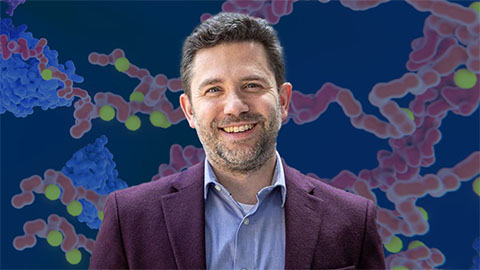
Cotruvo named Blavatnik award finalist
He received a $15,000 prize and was honored at a gala in October.
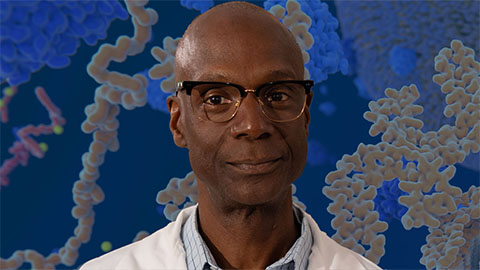
Phosphatases and pupils: A dual legacy
Yale professor Anton Bennett explores how protein tyrosine phosphatases shape disease, while building a legacy of mentorship that expands opportunity and fuels discovery in biochemistry and molecular biology.
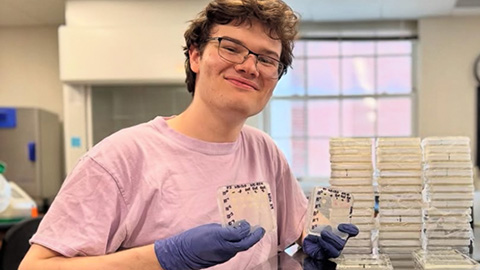
Summer research spotlight
The 2025 Undergraduate Research Award recipients share results and insights from their lab experiences.
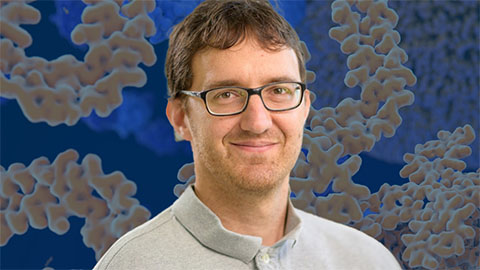
Truttmann recognized for cell stress research
He was honored by the Cell Stress Society International for his work on heat shock protein 70.

Understanding the roles of extracellular matrix and vesicles in valvular disease
MOSAIC scholar Cassandra Clift uses mass spectrometry and multiomics to study cardiovascular calcification and collagen dysregulation, bridging her background in bioengineering and biology to investigate extracellular vesicles and heart disease.

